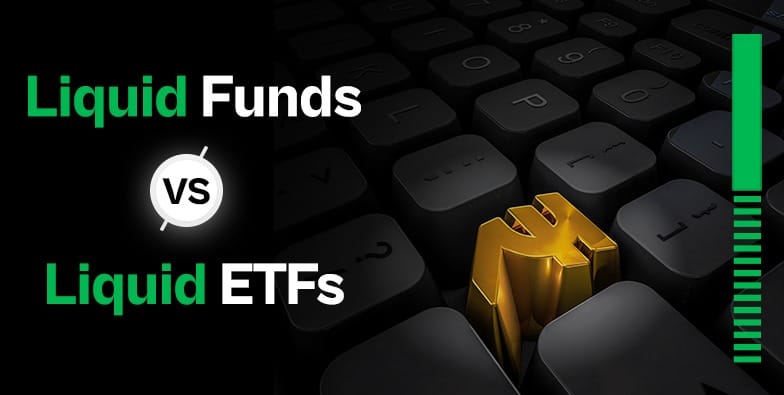The assets under management (AUM) of the Indian mutual fund industry rose to ₹53.40 trillion on March 31st, 2024, when compared to ₹8.25 trillion on March 31st, 2014. This six-fold rise in AUM clearly indicates the popularity of mutual fund schemes in India. However, exchange-traded funds – especially liquid ETFs – are now being seen as alternatives to savings accounts; and are helping investors earn short-term returns. Should you invest in a liquid mutual fund or a liquid ETF?
How are liquid fund investments different from liquid ETF
Liquid mutual funds generally invest in debt securities that mature in 91 days. These are actively managed mutual fund schemes and are categorised under the debt mutual fund category. Liquid ETFs (exchange-traded funds), on the other hand, invest in overnight securities. You will require a demat account to invest in a liquid ETF. These ETF investments always trade at the trading price of ₹1000 and the returns that investors earn are distributed in the form of dividends.
What are the benefits of liquid ETF investments?
Here are the key advantages of investing in liquid ETFs:
• Liquid ETFs can help you park your idle funds and earn short-term returns: Liquid exchange-traded funds offer high liquidity and are cost-effective. Certain individuals also use liquid ETFs as an alternative to a savings account, to earn returns in the short term. A liquid ETF investment, therefore, is a good option to park your idle funds and earn short-term returns.
• You can conveniently buy and sell liquid ETF units on stock exchanges: One of the major advantages of ETFs is that they can be traded on stock exchanges. You can buy and sell liquid ETF units like stocks on stock exchanges using an investment application or through a broker.
• Liquid ETFs offer flexibility: Liquid ETFs are flexible, which helps you as an investor to use them in different ways. They can be used to park idle cash, as an alternative to savings accounts, or as a short-term investment option.
• You can regularly receive returns from a liquid ETF: You can also choose the income-distribution-cum-capital-withdrawal option while investing in a liquid ETF and earn the accrued gains.
Which one should you pick: Liquid funds or liquid ETFs?
A crucial difference between liquid mutual funds and liquid ETFs is that investing in the former category does not require you to have a demat account. Therefore, if you are an active investor who has a demat account and wishes to earn returns through their trading account, you can choose a liquid ETF investment. If you still don’t have a demat account, you can opt for a liquid mutual fund investment. Liquid mutual funds offer high liquidity, have low transactional costs, and offer higher returns when compared to certain other mutual fund categories.
To sum it up
In conclusion, you must have a clear idea of your investment objective before choosing a liquid ETF or liquid fund investment. You must also use an SIP returns calculator to calculate your returns before investing in a liquid fund.



